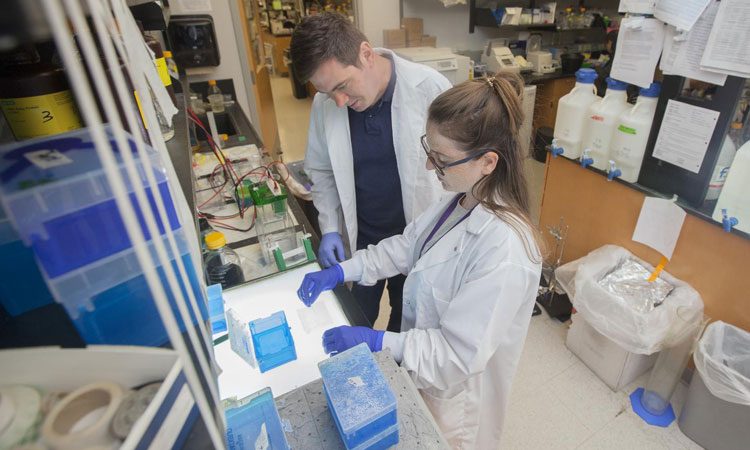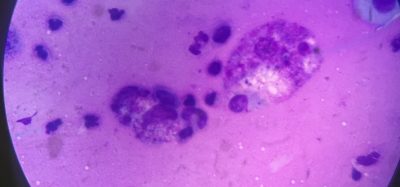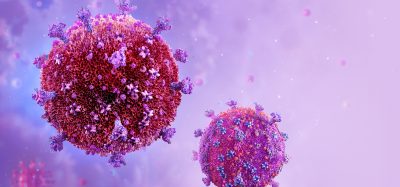Collaborative enzyme study could lead to a target for cancer therapeutics
Posted: 21 October 2019 | Rachael Harper (Drug Target Review) | No comments yet
A new study into the enzyme Cdc34 may make it possible to target the enzyme specifically to develop new cancer therapeutics.

Dr Shaun Olsen (back) and Katelyn Williams of the Medical University of South Carolina (credit: Sarah Pack, Medical University of South Carolina).
Researchers from the Medical University of South Carolina (MUSC), US have obtained three-dimensional (3D) structural snapshots of the enzyme Cdc34, a key regulator of cell biology and a target for cancer therapeutics.
These structures, along with studies in human cells, have revealed key features of this enzyme that are important for its regulation of cell growth and activity and could present opportunities for the design of novel cancer therapeutics.
“Cdc34 is a crucial regulator of many biological processes and functions abnormally in many cancers,” said Katelyn Williams, first author of the study.
Cdc34 is a central player in a cascade of E1-3 enzymes that interact with the signalling molecule ubiquitin to regulate cell growth and activity. Within this system, Cdc34 labels proteins that normally block cell growth with ubiquitin, in a way that specifically targets them for disposal by the proteasome. When Cdc34 is unable to function properly, these negative regulators of cell growth accumulate and stop cell growth.
Cdc34 is a crucial regulator of many biological processes”
Developing a therapy to target the E1 enzyme could have many unintended consequences but targeting Cdc34, an E2 enzyme, could be just as effective and safer.
“If you target the E1 enzyme, everything downstream of it gets turned off, which includes thousands of different pathways,” explained Shaun K Olsen, PhD who led the research team. “If you specifically target one of the E2s, however, it is just a small shunt of the overall repertoire of ubiquitin pathways that get turned off while everything else can function normally.”
To understand how best to target Cdc34, Olsen and Williams isolated the protein from yeast and human cells to obtain a series of structural snapshots of Cdc34. This allowed them to determine how it clicks together with an E1 enzyme and ubiquitin-like puzzle pieces. The MUSC team found that it does so via unique changes in shape.
“The big thing is that we are able to see this 3D accommodation by the E1 enzyme ‘wiggle’ Cdc34 into its E2 binding site,” said Williams. “We also found, which we had not seen previously, that Cdc34 also changes its shape to interact with the E1.”
Cdc34… changes its shape to interact with the E1″
After exploring this with proteins from yeast, Olsen and Williams worked with Alan Diehl, PhD, and his lab to confirm this happens in human cancer cells as well.
Because many of the details of Cdc34 mechanism that were discovered in this work are unique to this particular enzyme, it may be possible for medical scientists to target Cdc34 specifically as a means of developing new cancer therapeutics.
The study was published in Nature Communications.
Related topics
3D printing, Enzymes, Imaging, Protein, Targets, Therapeutics
Related conditions
Cancer
Related organisations
Medical University of South Carolina (MUSC)
Related people
Alan Diehl PhD, Katelyn Williams, Shaun K Olsen PhD







